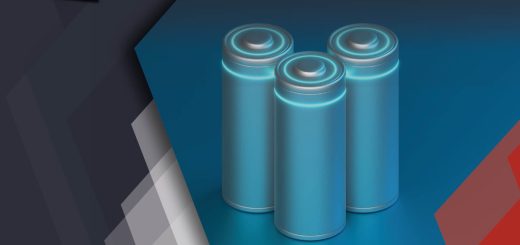Unlocking Comprehensive Prior Art Patent Searches: 6 Essential Parameters for Legal & Patent Counsels
Efficient and accurate patent searching involves navigating through numerous patent documents, a task that demands expertise from trained IP professionals. Given the complexity, in-house patent searching poses challenges, leading to a prominent trend of outsourcing. However, doubts often arise when hiring a prior art search vendor. Drawing on my experience as an IP consultant managing over 2000 annual prior art patent search inquiries, I understand the challenges faced by legal and patent counsels as they engage external vendors for searches. This includes uncertainties about the chosen patent vendor’s reliability and whether the search is truly comprehensive, leaving room for overlooked results.
The comprehensive nature of prior art searches is pivotal for the thorough exploration of relevant prior art, especially for litigation needs. In this discussion, we delve into best practices that define thorough searches, emphasizing the identification of linchpin elements and metrics beyond routine keyword searching. You can use these standards during evaluating vendors, ordering searches or quality checks to ensure optimal service.
Table of Contents
1. Synergistic Expertise: Harnessing the power of Parallel Prior Art Patent Searches
One of the most important factors that affect the quality and comprehensiveness of a prior art search is the expertise of the searchers. Prior art search is not a mechanical or algorithmic process, but a creative and analytical one. A comprehensive prior art search requires a deep understanding of key areas. These include the patent’s technology, relevant terminology, patent classification systems, search databases, and search techniques.
However, no single searcher can possess all the necessary expertise and perspectives to cover all the possible aspects and angles of a prior art search. Therefore, it is advisable to conduct parallel searches involving at least two independent experts, preferably with different backgrounds and specializations. This way, the searchers can complement each other’s strengths and weaknesses, and cross-check each other’s results.
Legal and patent counsels engaging external vendors should verify that the search team comprises qualified, experienced individuals who can work independently and collaboratively for a comprehensive prior art search report.
2. Database Diversity: Unleashing the Full Spectrum of Knowledge
Another critical consideration is ensuring the access and use of multiple databases by the search vendor. Each database has its own advantages and limitations in terms of coverage, quality, accessibility, and searchability. Some databases may miss the latest publications, cover only certain countries or regions, exclude some document types or keywords, or have limited search features and filters.
Therefore, to avoid overlooking significant prior art, it is imperative to leverage diverse databases, including both commercial and free options, that span different domains, languages, formats, time periods, and wide geography coverage.
3. Multifaceted Classification Systems: Maximizing Exploration with Precision
The third key factor affecting the comprehensiveness of a prior art search is the use of classification systems. Given the multitude of classification systems, such as CPC, IPC, USPC, FI Terms, UCLA, etc., with each having its own uniqueness, structure, scope, and granularity requires a strategic approach. When evaluating search systems, the legal team needs to recognize that deficiencies can exist. Some systems may lack coverage of key technologies or aspects. Others might have scopes that are too broad or too narrow.
To address these limitations, it is crucial to ensure that the search vendor integrates this strategy. It plays a key role in maximizing the effectiveness of the prior art search.
4. Global Insight and Technical Proficiency: Illuminating the Intellectual Landscape
A comprehensive prior art patent search extends beyond borders. A global search strategy, coupled with technical expertise in the specific patent’s technology, paints a complete picture. Understanding the broader landscape enables a targeted search, providing invaluable insights crucial for a robust defense.
The global perspective encompasses awareness of geographical, temporal, and cultural dimensions in prior art. Identifying active regions, understand historical and current trends, and be attuned to linguistic nuances is vital. Additionally, technical expertise is crucial, involving a deep understanding of the patent’s technology. It is crucial to evaluate technical features, identify critical aspects, recognize challenges and solutions, and assess novelty and inventiveness. One should consider technical standards and regulations to determine patentability and enforceability.
To ensure the integration of this approach, legal counsel should verify whether the search vendor incorporates these considerations into their methodology.
5. Precision Targeting for Strategic Advantage
Precision targeting means using specific and focused search techniques and criteria to find the most relevant and substantial prior art. It provides a strategic advantage for legal and patent counsels. While getting a search done, make sure that the search vendor uses the following:
a. Assignee-Specific Mastery
Performing focused searches on patents and research via targeting the work of key assignees who are likely to have pertinent inventions. These assignees include competitors, collaborators, or predecessors of the applicant.
b. Global Localization
Identify the key research hubs and hotspots for the patent’s technology. Targeted searches are then performed in countries or regions that are influential in that technology area. For example, a search on auto tech in Germany or Japan.
c. Standards and Beyond
Delving into the standard documentations and non-patent literature related to the patent’s technology. This step is especially crucial if the technology is linked to or compliant with certain standards.
6. Non-patent literature search
Non-patent literature (NPL) serves as a valuable reservoir of prior art, encompassing insights into the state of the art, problems and solutions, trends, opinions, and applications of the patent’s technology. NPL spans scientific articles, technical reports, conference proceedings, books, and various multimedia sources like images, videos, and audio recordings. In addition to targeted searches in standards, exploring NPL sources such as research papers, defensive publications, datasheets, and multimedia content is essential.
Using cutting-edge AI tools can enhance the search process by quickly analyzing large datasets and providing relevant results. These tools supplement insights from traditional databases, offering a comprehensive view of the prior art landscape. It is crucial for legal or patent counsel to ensure that the search vendor adopts these practices, incorporating non-patent literature (NPL) exploration and leveraging AI tools for an enhanced and thorough prior art search.
Summation
The metrics outlined above serve as a benchmark for legal and patent counsels to ensure the comprehensiveness of the search conducted by external vendors. Embracing parallel searches, utilizing multiple databases, and incorporating diverse classification systems allows legal professionals to enhance robustness. Additional gains come from conducting global searches and targeting insights from worldwide data. This strengthens their overall defense strategies in intellectual property litigation. Additionally, searching non-patent literature sources is also recommended. Consider it as a bonus-point if your search vendor applies all the above strategies to make the searches comprehensive.
At Sagacious, we uphold the principle that everyone engaged in ongoing litigation should have their skin in the game. Our proficiency, dedication to comprehensiveness, and utilization of in-house AI tools guarantee robust support for legal and patent counsels in protecting Intellectual Property. As a result, our charges are solely based on the quality of results delivered, rather than the hours invested. Learn more about our approach to discover Prior Art Searches.
– Dhananjay (DJ) Kumar Das, Group Head – Business Development & Sales Operations at Sagacious IP
Having Queries? Contact Us Now!
"*" indicates required fields




